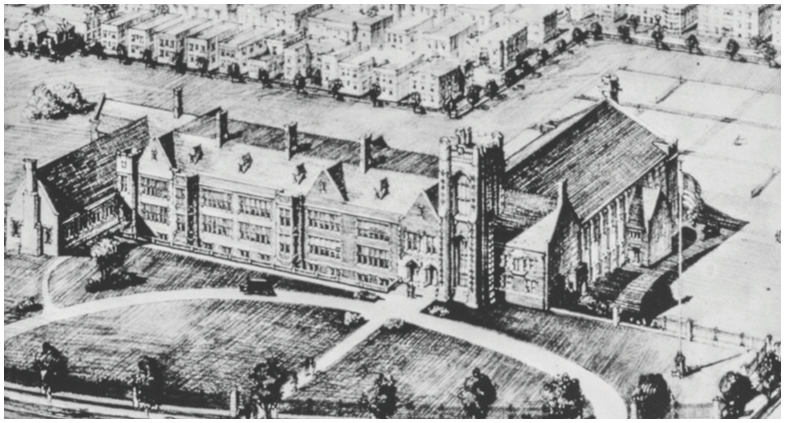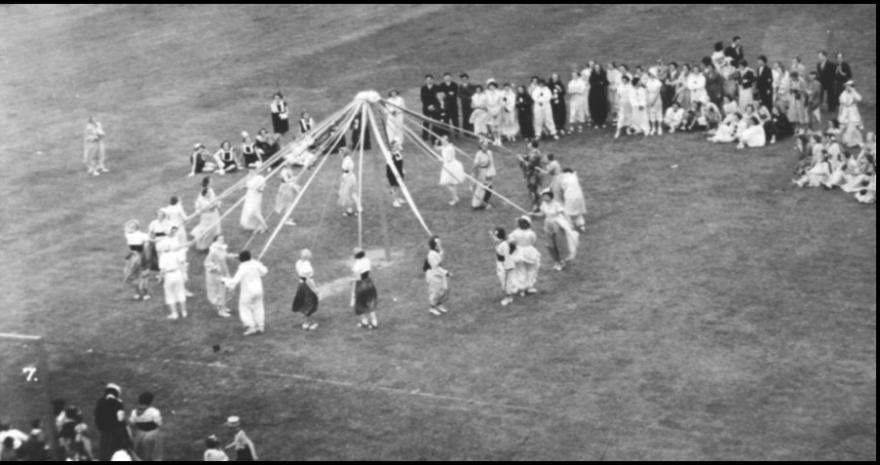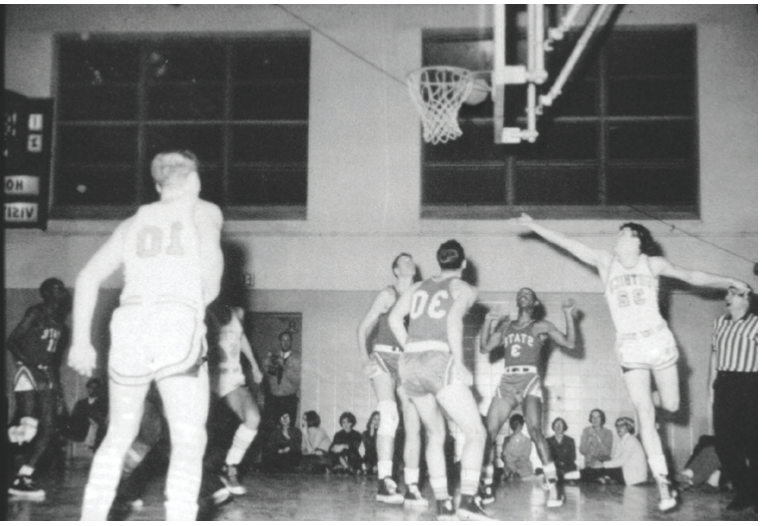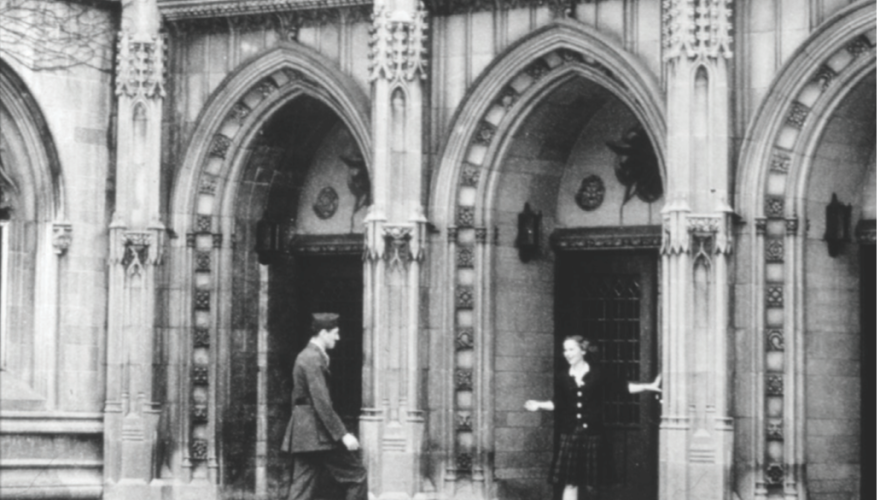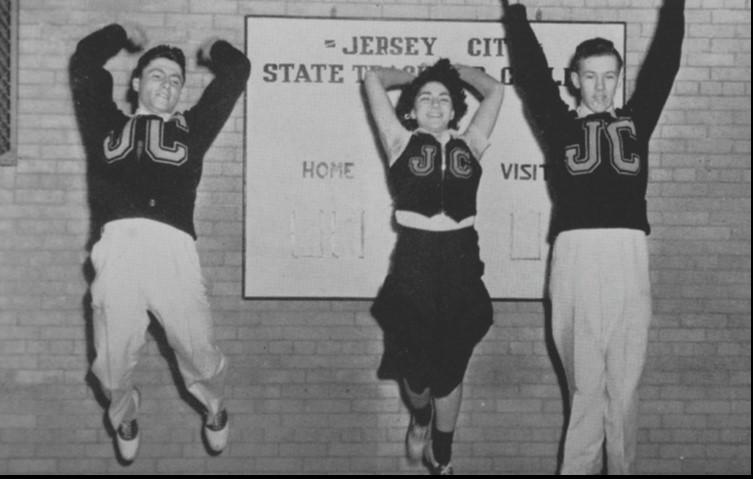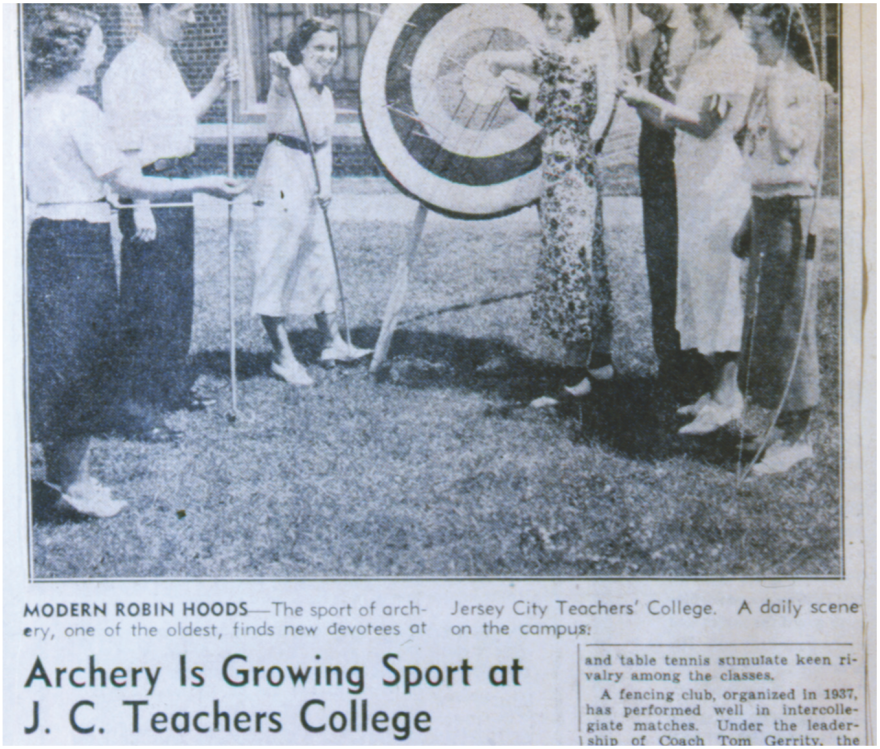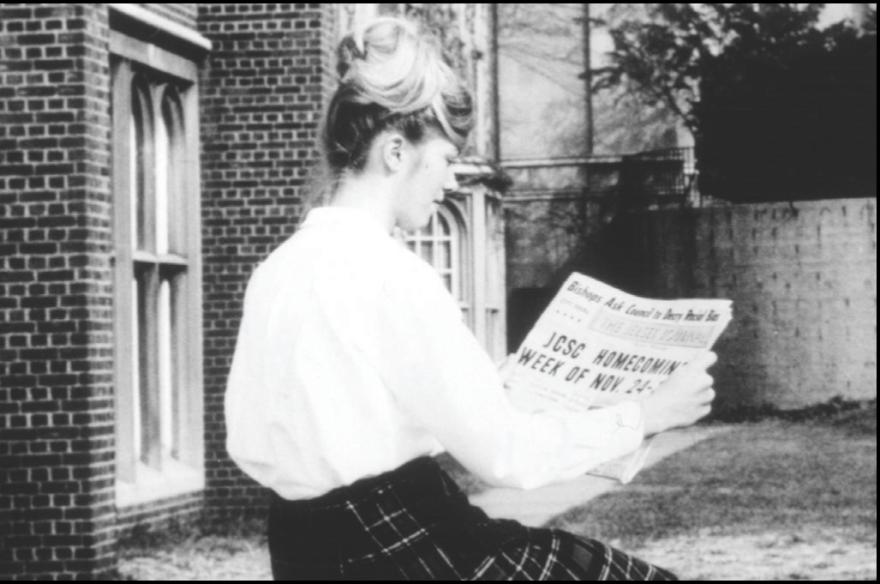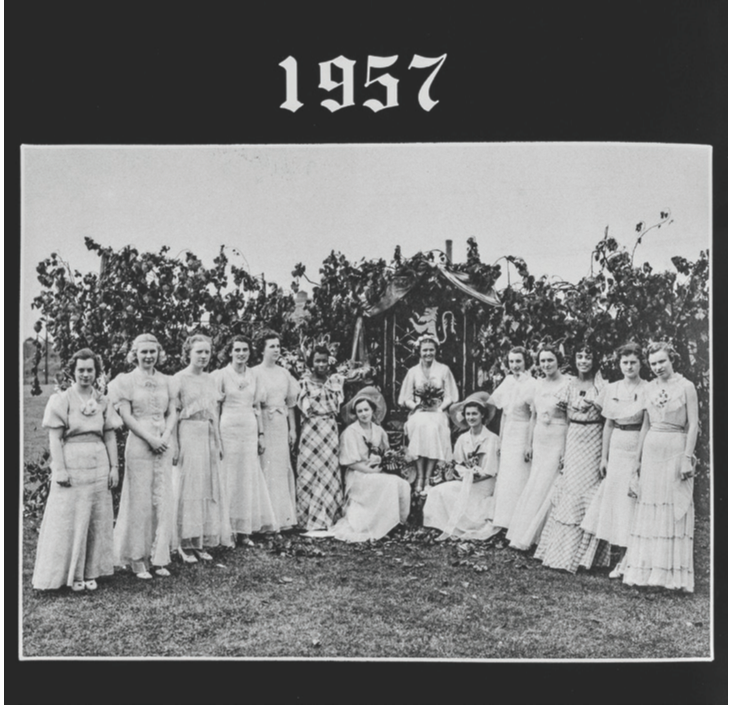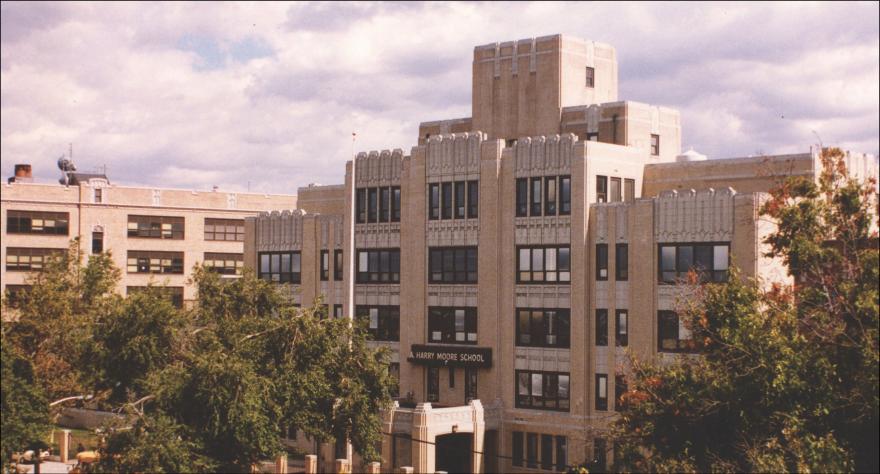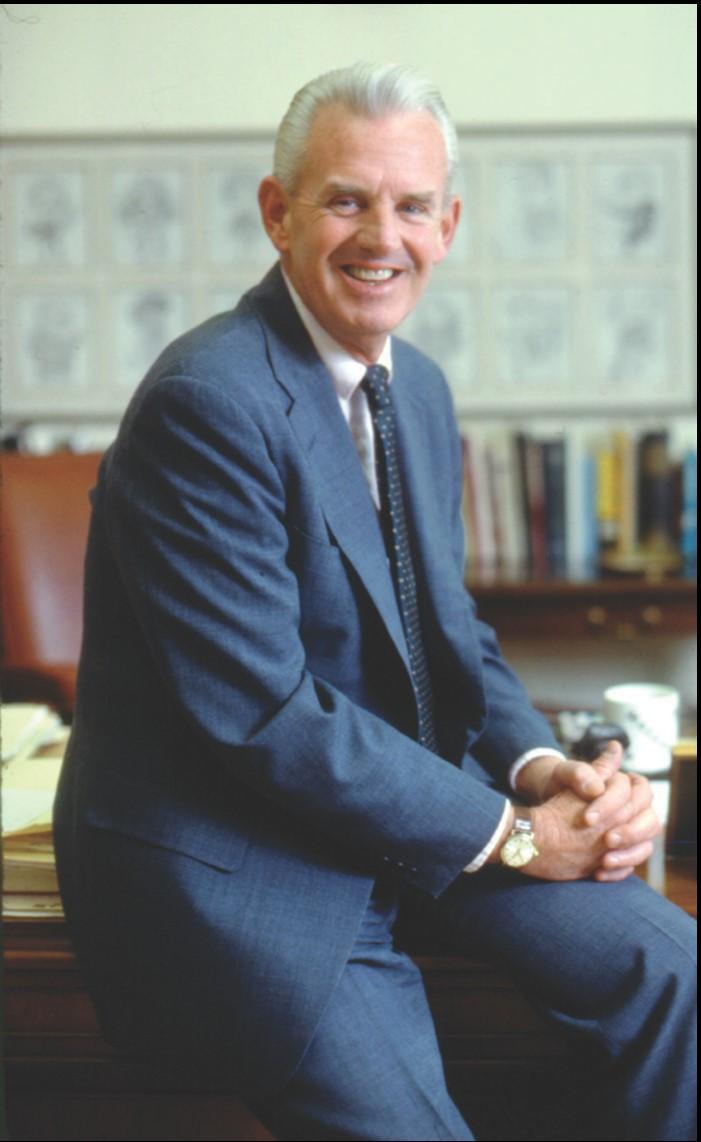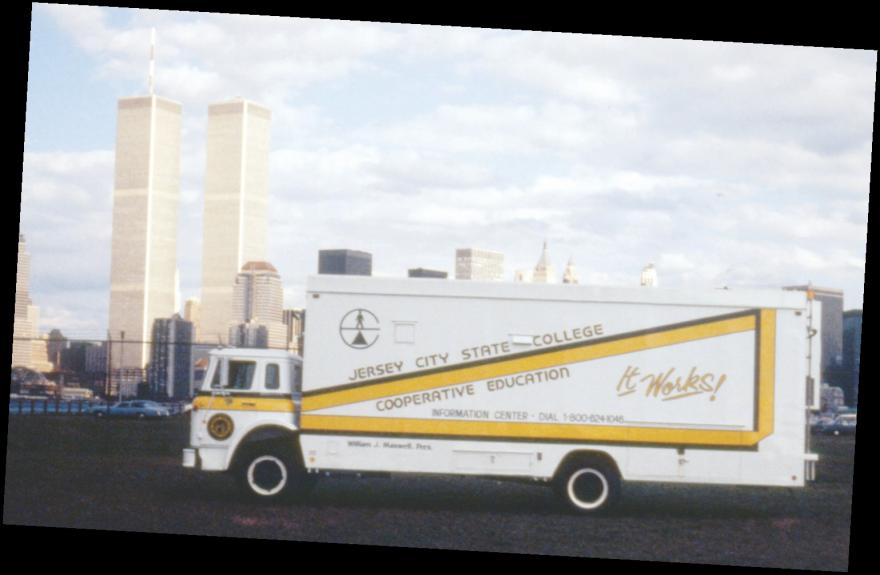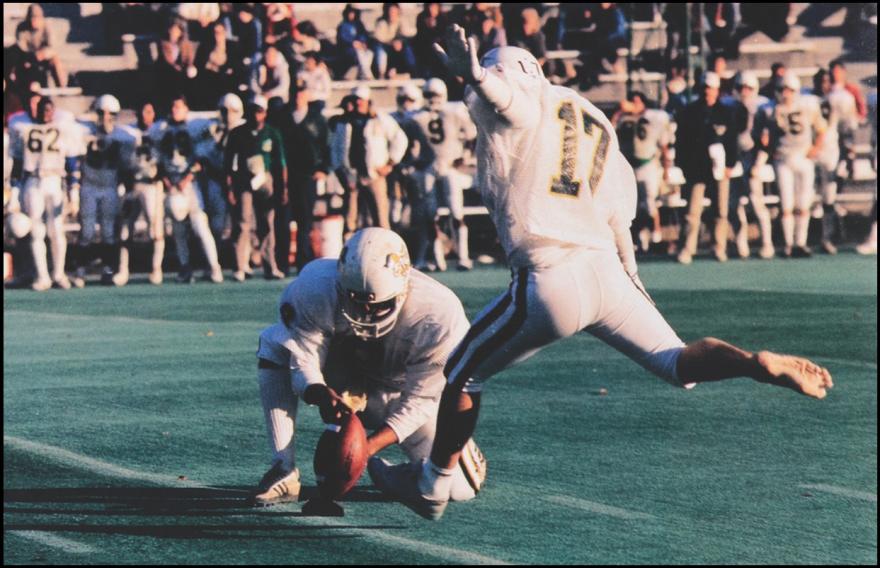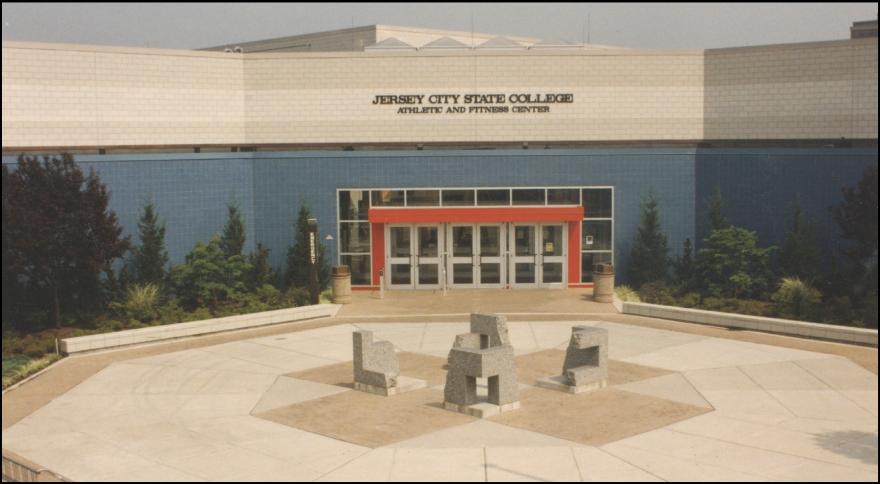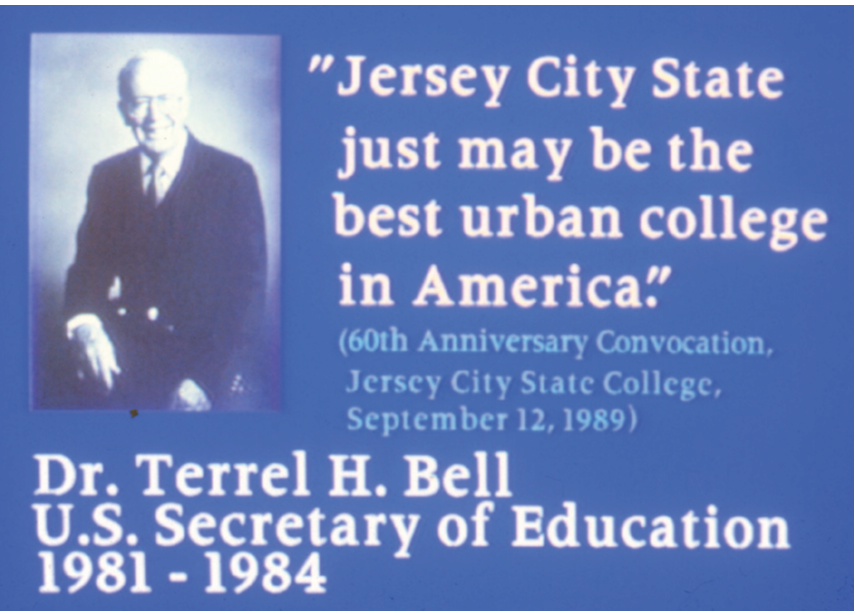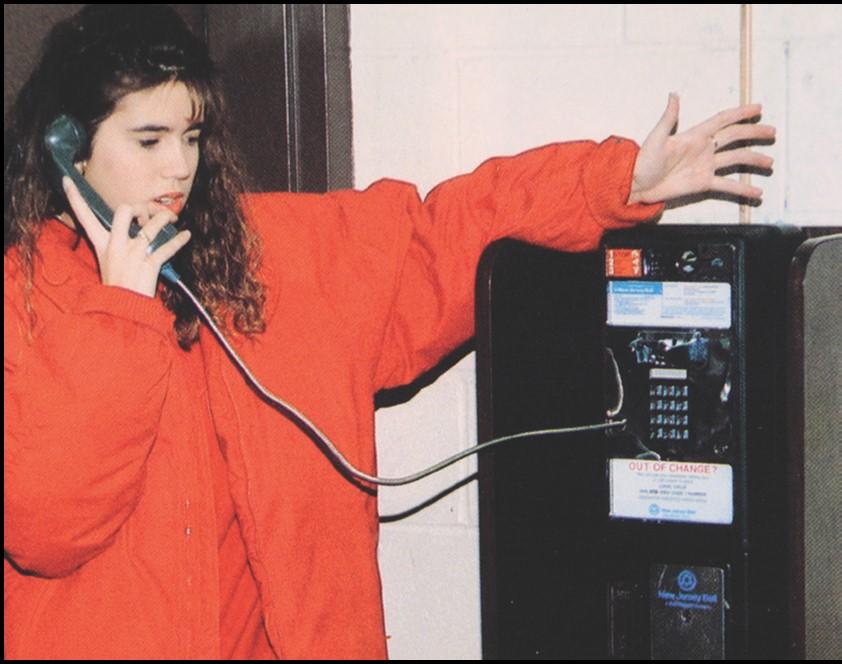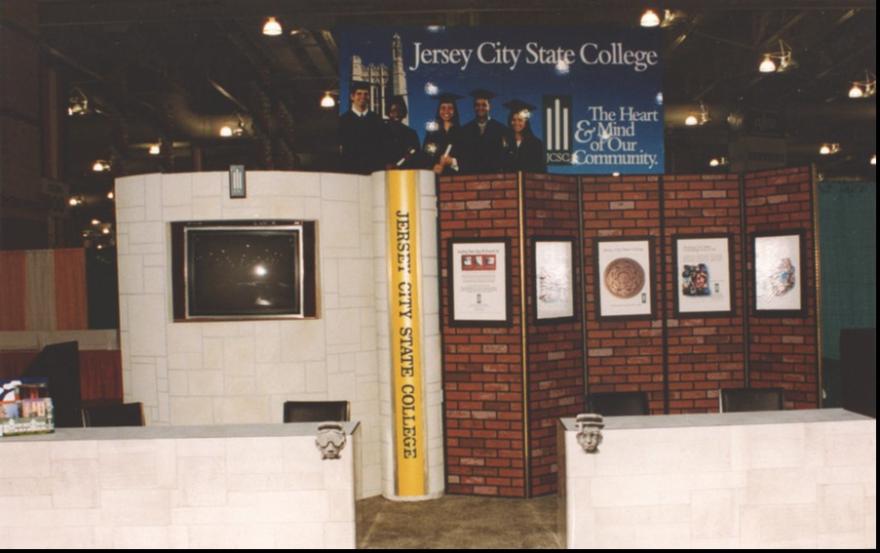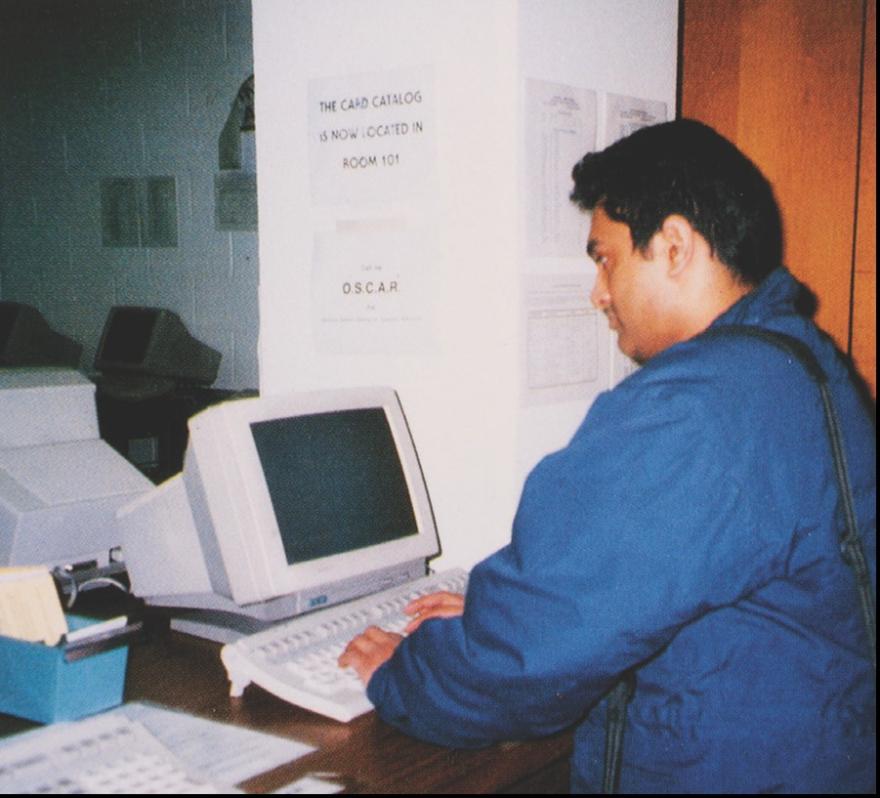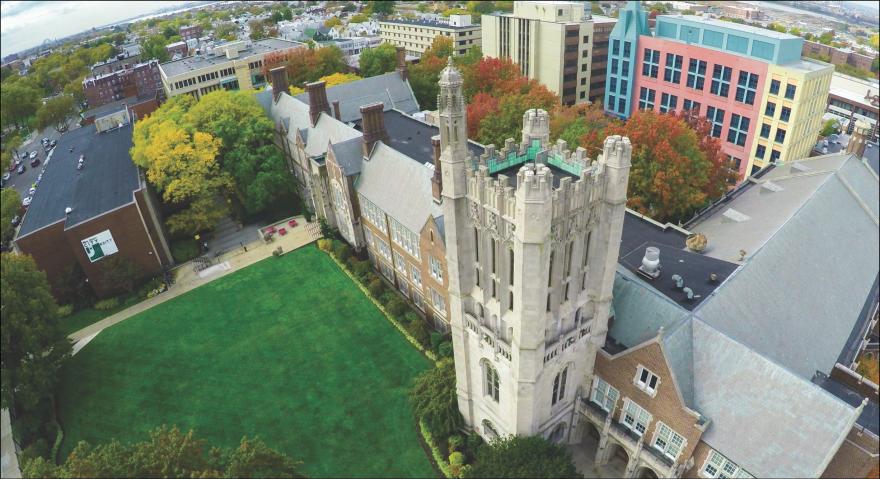Feature Article: Decades - NJCU Celebrates its 90th Year
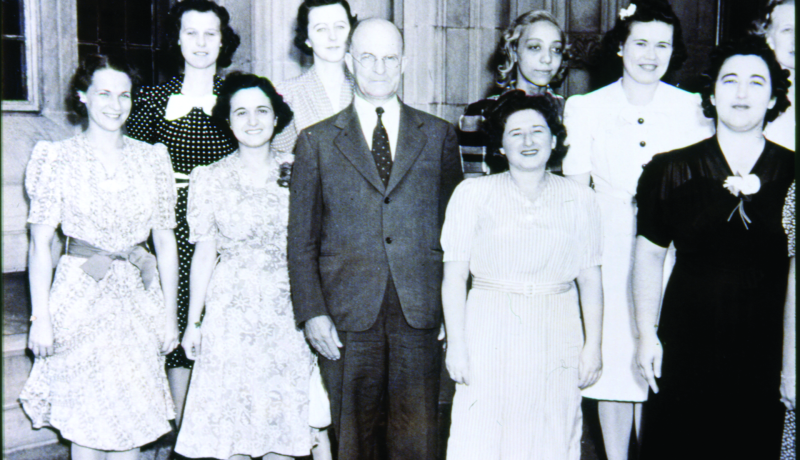
Decades - NJCU Celebrates its 90th Year
1927
“Jersey City State was opening. It was a small, wonderful school, a beautiful building. All I had to do was take the bus. It was 30 cents round trip to get there from Union City and 30 cents to eat. It was free as long as I promised them that I would teach at least two years.” At a time of national prosperity and a growing school population, The New Jersey State Normal School at Jersey City was chartered. On a plot of 10 acres on Hudson (now Kennedy) Boulevard, Hepburn Hall was built to accommodate 1,000 students. Housing an eight-room demonstration school, a 35,000- volume-capacity library wing, a gymnasium, auditorium and a 400 seat cafeteria, the college welcomed 330 young women and one man. The Board of Education expanded the length of the Normal School curricula from two to three years, leaving the Normal School at Jersey City to be the only teacher preparatory school in the country to begin with a three-year program. Dr. William A Messler headed the faculty as Principal.
1930
As the College became an institution, the 1930s established new traditions on campus. There was an annual interclass “sing” competition, May Day called for a festival featuring a Maypole dance and no Halloween went without a celebration.
1933
A men’s basketball team was formed, starting with 30 men.
1934
Dr. Roy Lee Shaffer, head of the State Normal School at Paterson, became Principal at Jersey City. The men’s basketball team participated in 14 home and away games.
1935
With rapid changes in the field of education, The Normal School at Jersey City became the New Jersey State Teachers College at Jersey City. Students now attended the institution for four years and would be awarded the bachelor of science in education.
1936
The institution added a degree program in Health Education and Nursing for the training of school nurses in cooperation with the Jersey City Medical Center. This new mission would be supplemented during the war years with a pre-clinical training.
1937
While he continued to champion a bill in the Assembly for the creation of a New Jersey University as part of the free public school system, Dr. Shaffer’s title was changed to President. The 55-minute classes ran from 9 a.m. to 3 p.m., with attendance taken and no cutting class allowed. In addition to the 22 semester hours in general and subject methods, there was a course in each: Tests and Measurement, Children’s Literature, and Handwriting. The only difference from high school was that regular courses met three times a week and an assembly of the entire student body was held weekly.
1938
Green and Gold became the permanent choice as the school’s Alma Mater song.
1940
Full-time and part-time enrollment mounted to 818, plus 35 faculty members. Dr. Shaffer was succeeded by Dr. Chris C. Rossey, who had served as dean of instruction at the College for three years prior. The College became involved in military preparedness with the outbreak of World War II by establishing a civilian pilot training program, subsidized by the government. Overseen by the Dean of Men, the volunteers received their flight training at the seaplane base at Overpeck Creek, taking meteorology and navigation courses in Grossnickle. The volunteers all went on to serve in the Army Air Corps. program for nursing students.
1943
A pre-clinical training program was started for contingents of cadets under the United States Cadet Nurse Corps. Academic changes hit the campus with the authorization of a two-year general curriculum.
1946
Forrest A. Irwin becomes President of the College. After the war ends, full-time enrollment rises to nearly 700. The graduating class of 1950 hadbeen 45 percent male, many of them veterans of the war. Michael Gilligan becomes the Dean of Instruction. The president’s salary in 1946 was set at $7,500.
1950
The Arts and Science program was discontinued, leaving General Elementary, Kindergarten-Primary, and Health Education and Nursing the only curricula.
1953
Students begin to learn how to teach in grades five to nine in public schools. The College undertook its first institutional self-study and outside evaluation, resulting in its official accreditation by the American Association of Colleges of Teacher Education.
1954
Dean Michael B. Gilligan becomes president of the College.
1955
Enrollment drops to 400 students, with the number of men in the graduating class at only seven percent. Irwin decides to launch a plan to expand the institution, despite rumors of the institution’s demise. A small addition is added to the library, expanding the collection to 65,000 volumes. A new gymnasium is added as an extension to the auditorium wing. The new athletic facility brought a regulation-sized basketball court, bleachers, a dance studio, lockers, and shower rooms.
1958
New Jersey State Teachers College at Jersey City became Jersey City State College and was authorized to award the bachelor of arts degree. The College launched programs for secondary majors and minors in the fields of English, mathematics, science, social studies, and art. The College also went through its second self-study and received accreditation from the National Council for Accreditation of Teacher Education and the Middle States Association of Colleges and Secondary Schools.
1959
The institution began to offer the Master of Arts in Elementary Education. The College acquires the A. Harry Moore School to enhance the Special Education curriculum, making it one of the few in the nation, at the time, with a campus-based special education demonstration school. In the same year, the first free-standing addition to the campus was opened Grossnickle Hall.
1967
The student body grew to more than 5,700 students, including nearly 800 graduate students, and a faculty of 179. The National Council for Accredidation of Teacher Education accreditation was reaffirmed and the first Jersey City State board of trustees convened.
1968
Jersey City State College became a multipurpose institution, now authorized to develop a liberal arts program and expand teacher preparation programs. Dr. James Mullen became President. The 13 existing departments expanded to 25, and the School of Arts and Science and School of Education were established. This later became the School of Professional Studies.
1969
The Middle States Association renewed its accreditation.
1970
Rossey Hall opened as a six-story classroom building.
1971
Tidelands Athletic Complex was completed on 15 acres of landfill at Newark Bay.
1973
The five-story Science Building opens and Dr. William J. Maxwell became President.
1975
The Student Union Building opened as student enrollment climbed to more than 10,500, with 337 faculty members in 26 departments.
1976
A 50,000-square-foot industrial building on West Side Avenue was renovated, establishing the Center for Media and Performing Arts.
1985
The institution was awarded a $5.7 million Governor’s Challenge Grant for an expanded Cooperative Education Program, which would serve all academic majors.
1994
The Professional Studies Building opened, and the Athletic and Fitness Centers were built.
1996
The Center for Public Policy and Urban Research was established.
1998
With a climbing enrollment and advanced academic departments, The New Jersey Commission on Higher Education approved the renaming of the College to New Jersey City University. The university was restructured into three colleges: Arts and Sciences, Education, and Professional Studies.
2003
NJCU joined with the City of Jersey City, the Jersey City Board of Education, and New Jersey Transit to collaborate on the Jersey City Bayfront Plan. New Jersey City University West Campus Redevelopment Plan began to roll out.
2011
After 19 years, NJCU President Carlos Hernández retired. Under his tenure, three new buildings were erected and, in 1998, the school became a university.
2012
Dr. Sue Henderson became the first female president of the University.
2015
The School of Business opened in the Jersey City financial district.
